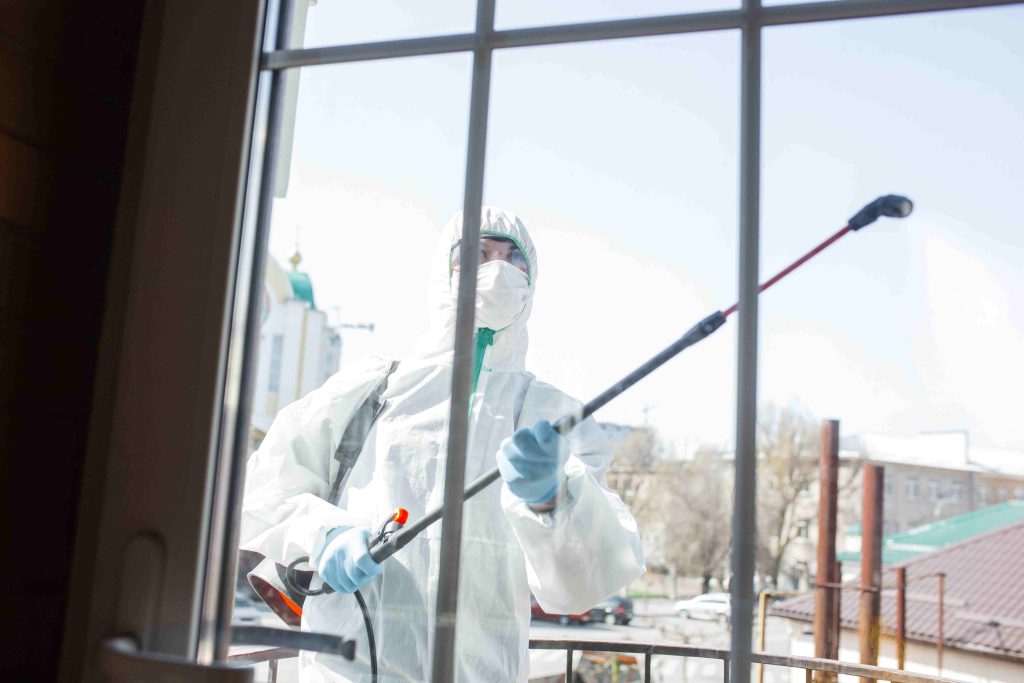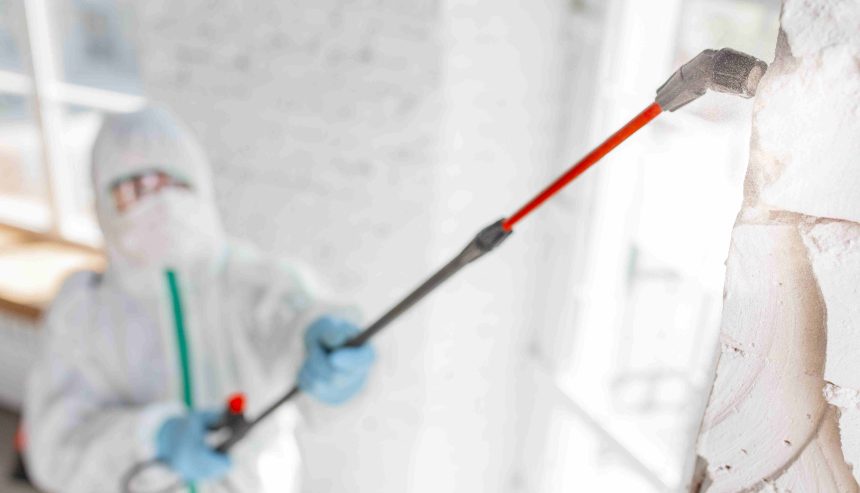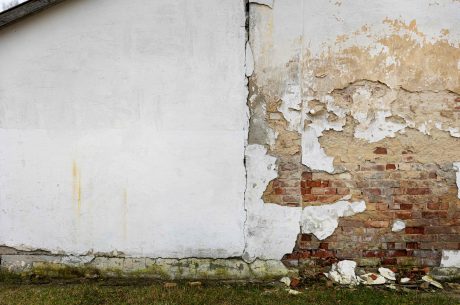Discovering mold from a water leak in your ceiling can be distressing and alarming for any homeowner. Mold not only presents health risks but can also cause structural damage to your property. Identifying the source of the water leak and promptly resolving the mold issue is essential to prevent further deterioration and safeguard the well-being of occupants.
If you see mold caused by a water leak in the ceiling, don’t hesitate to take quick action. At PuroClean of Ft. Lauderdale South, we specialize in mold removal, water damage remediation, biohazard cleanup, and other property damage restoration. We are available 24/7, so call us now at (754) 732-8383 for immediate assistance!
In this article, we will delve into the process of detecting mold growth resulting from a water leak in the ceiling, understand its potential implications, and explore effective measures to eliminate mold infestation while addressing the underlying cause.
Discovering Mold from Water Leak in Ceiling
Detecting water damage early is crucial to prevent additional damage and the growth of mold, which can pose health risks and lead to more extensive repairs. Here are some signs of a water leak in your ceiling that you should keep in mind:
Water Stains
Mysterious water stains or discoloration on your ceiling indicate water leakage. These brownish spots are caused by water seeping through cracks or gaps in your roof or plumbing, leaving visible marks on the ceiling surface. Such stains often worsen over time if left unattended, leading to potential structural damage.
Dampness or Moisture
Feeling dampness or moisture when touching the affected area on your ceiling is another significant sign of a water leak. The presence of moisture suggests that water is actively infiltrating and accumulating within the ceiling material, creating an environment conducive to mold growth.
Musty Odor
A musty or moldy smell is often associated with water leaks and water damage in ceilings. The smell results from mold and mildew that can quickly develop in damp and dark spaces, such as the area affected by the water leak.
Peeling or Bubbling Paint
If you notice paint peeling or bubbling on your ceiling, it could be due to water seeping behind the paint layer. Water weakens the adhesion between the paint and the ceiling surface, causing the paint to bubble or peel off.
Visible Mold Growth
The appearance of visible mold or mildew on your ceiling clearly indicates prolonged water exposure. Mold colonies often appear as black, green, or brown patches. They can spread rapidly, posing health risks and further damaging your ceiling and surrounding areas.
Warped or Sagging Ceiling
Water leaks can lead to the deterioration of ceiling materials, causing them to warp or sag. If you notice irregularities in your ceiling’s surface or see it sagging, it’s a strong sign of water damage that requires immediate attention.
Promptly addressing signs of mold from water leak in ceiling is vital to prevent further damage. Contacting professionals for proper assessment and remediation is strongly advised, as we have the expertise and equipment to effectively handle the situation and restore your home to a safe and healthy state.

Locating the Source of the Water Leak
Pinpointing the source of a water leak can be a process of elimination, and checking the roof and plumbing are essential steps. Here’s a more detailed guide on how to go about it:
- Check for Roof Leaks: Start by examining the areas where your ceiling meets the roof. Look for any water stains, discoloration, or visible damage. If your roof has an attic, inspect it as well for signs of water intrusion, such as wet insulation or water stains on wooden structures.
- Inspect Plumbing and Pipes: Check all visible plumbing components, including pipes and fixtures. Look for any leaks, drips, or puddles of water. Pay close attention to areas under sinks, toilets, near water heaters, and any exposed pipes.
- Use a Moisture Meter: If you can’t visually identify the leak’s source, consider using a moisture meter. It can help you detect hidden moisture within walls, ceilings, or floors, which can lead you to the point of leakage.
- Check for Condensation: Sometimes, water leaks can be caused by condensation. Inspect areas where warm and cold air meet, such as around air conditioning vents, as condensation may form and drip onto the ceiling.
- Examine Exterior Walls: If you have exterior walls adjacent to the leak, inspect them for any cracks, gaps, or damage that might be allowing water to seep into your ceiling.
- Investigate Roofing Components: If the roof is the suspected leak source, inspect roofing components like shingles, flashing, and gutters. Damaged or improperly installed roofing materials can lead to water infiltration.
Remember that water leaks can cause severe damage to your property over time, so it’s essential to address them promptly. Taking early action can save you from more significant problems and expenses in the future, such as mold from water leak in ceiling.
Removing the Mold

Now that you clearly understand the extent and hiding places of mold growth, it’s time to focus on effectively removing this hazardous substance from your ceiling. Removing mold spores requires careful attention and thoroughness to ensure complete eradication. Here are three key steps to help you successfully remove the mold:
- Containment: Before starting the removal process, it is crucial to contain the affected area to prevent the spread of mold spores. Seal off the room by shutting all doors and windows, and cover any vents or openings with plastic sheets and tape. That will create a controlled environment where you can safely work without risking cross-contamination.
- Physical Removal: Begin by wearing protective equipment such as gloves, goggles, and a respiratory mask to shield yourself from mold spores and avoid inhalation. Use a damp cloth or sponge with a detergent solution (water mixed with mild dish soap) to wipe down surfaces with visible mold growth. For porous materials like drywall or ceiling tiles heavily infested with mold, it may be necessary to remove and replace them entirely.
- Professional Mold Remediation: While homeowners can often handle small-scale mold removal, extensive infestations or cases involving toxic molds should be left to professionals trained in mold remediation. They possess specialized equipment, such as high-efficiency particulate air (HEPA) filters and negative air machines, which are essential for capturing airborne spores during the removal process.
With proper precautions taken during removal, you can significantly reduce health risks associated with exposure to mold spores. Once you have successfully removed the mold from water leak in ceiling, it’s essential to address the root cause of its growth.
Fixing the Water Leak
Fixing a water leak in your ceiling involves inspecting and addressing plumbing issues and potential roof leaks. Here’s a step-by-step guide to help you tackle the problem effectively:
- Inspect the Source: Start by identifying the exact source of the water leak. Check the area above the ceiling where the leak occurs to locate any potential roof leaks. Look for discolored or damp spots on the ceiling, indicating where the water is coming from.
- Repairing Damaged Pipes: If the leak is due to damaged or leaking pipes, carefully examine them for cracks, loose fittings, or signs of corrosion. Depending on the extent of the damage, you may need to replace the affected pipes or fittings. In case you’re not experienced with plumbing repairs, it’s best to consult a professional plumber.
- Patching Roof Leaks: If the water is coming from the roof, you must locate the specific entry point. This may require climbing and inspecting the roof for damaged or missing shingles, gaps around chimneys or vents, or other potential openings. Use roofing cement or a waterproof patch to seal any holes or cracks that you find.
- Check for Hidden Damage: Water leaks can often lead to hidden damage in the ceiling or walls, such as mold growth or weakened structures. Be sure to thoroughly inspect the affected area for any additional issues and address them promptly.
- Allow For Proper Drying: After fixing the leak, ensure the area has enough time to dry entirely before repairing any cosmetic damage to the ceiling. Using fans or dehumidifiers can help expedite the drying process.
Remember, if you notice mold from water leak in ceiling, it’s crucial to address the issue promptly and thoroughly to prevent any potential damage. If you’re uncomfortable performing these repairs yourself or the problem seems complex, it’s best to seek help from a professional plumber or roofing contractor.
Preventing Future Mold Growth
Improving ventilation and reducing moisture are critical strategies for preventing future mold growth in your home. Here are some additional steps you can take to protect your living space further:
Control Moisture
Moisture is the primary factor that facilitates mold growth. Address any water leaks or plumbing concerns promptly. Keep an eye on areas prone to moisture, such as basements, crawl spaces, and attics. Use a hygrometer to track indoor humidity levels and keep them between 30% to 50% to discourage mold growth.
Proper Ventilation
Ensure that your home has adequate ventilation in all rooms, especially in areas like bathrooms, kitchens, and laundry rooms. Exhaust fans are essential in these spaces to remove excess moisture generated by cooking, showering, and doing laundry.
Regular Cleaning
Regularly clean and inspect areas inclined to mold growth, such as comfort rooms and kitchens. Use mold-resistant products for cleaning and ensure that surfaces are kept dry.
Proper Insulation
Insulate your home properly to eliminate condensation on cold surfaces. It includes insulating windows, walls, and pipes. Insulation helps maintain consistent temperatures and reduces the chances of moisture accumulation.
Outdoor Drainage
Ensure that rainwater and groundwater are directed away from your home’s foundation. Proper grading and gutter systems can help prevent moisture from seeping into your home.
If you have experienced significant mold from water leak in ceiling in the past, it’s essential to address the central cause of the issue before taking preventive measures. Professional mold remediation may be necessary to ensure thorough mold removal and prevent recurrence. Remember that consistent maintenance and diligence are key to keeping your home mold-free.
The Bottom Line
Identifying and resolving mold from water leak in ceiling requires prompt action to prevent further damage and potential health risks. By recognizing the signs of a water leak, such as stains or discoloration on your ceiling, you can start locating its source. Once located, it is crucial to assess the extent of mold growth and take immediate steps to remove it properly. Remember that early detection and swift action are vital in minimizing damage caused by leaks and preventing further issues.
The Paramedics of Property Damage
If you’re looking for professional assistance in identifying and resolving mold issues from a water leak, contact us at PuroClean of Ft. Lauderdale South today. Our experts will ensure a safe and effective remediation process for a healthier living space. Act now to protect your home!
PuroClean of Ft. Lauderdale South is your trusted partner for emergency restoration services in the Fort Lauderdale, Pembroke Pines, Davie, Hollywood, Dania Beach, Cooper City, Fort Lauderdale Airport, Pembroke Lakes Mall, Hard Rock Hotel, and Miami areas. Our dedicated team is ready to respond swiftly to any disaster, offering professional restoration services with a focus on quality and efficiency. Whether you’re dealing with water damage, fire damage, mold issues, or any other emergency, our experts are equipped to handle the restoration process promptly.
When facing restoration challenges, don’t hesitate to call the experts. Our team of skilled professionals is ready to guide you through every step, ensuring a seamless and successful restoration process. If you have questions or need immediate assistance, engage with our online assistant – a convenient and quick way to get the information you seek. Stay informed about the latest insights and tips in the realm of restoration by leaving your contact information in our contact form. We’ll notify you promptly when we publish our next article on the topic, empowering you with the knowledge you need for a successful restoration experience. Take the first step towards a renewed and revitalized space today!




 PuroClean of Ft. Lauderdale South
PuroClean of Ft. Lauderdale South